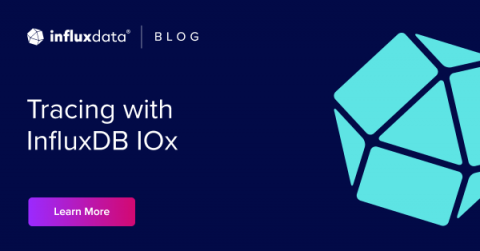Tracing with InfluxDB IOx
Tracing has always been a key use case for time series data. But admittedly, it’s also one that past versions of InfluxDB could not handle as well as we wanted. One of the roadblocks was the cardinality issue. Tracing data is, almost by definition, high cardinality data and prior to InfluxDB IOx, high cardinality data could affect query performance.











